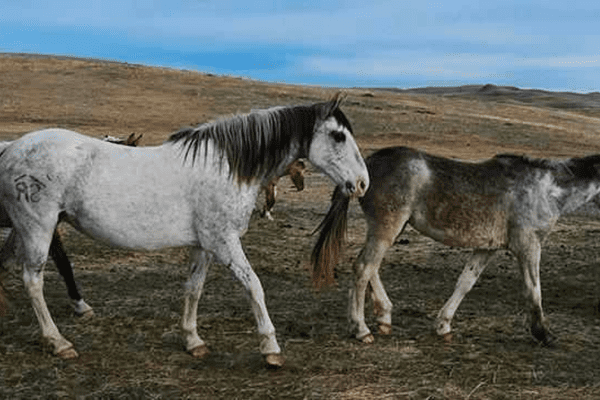Originating from the lush Northwest American landscapes, Cayuse Ponies are an impressive breed known for their strength and agility. Crafted to navigate challenging terrains at speed with great agility, this equine breed has become a symbol of resilience over the decades.
Unfortunately, as we progress into the 21st century their numbers have decreased substantially leading to dedicated breeders in California striving hard for their preservation. Join us as we delve into its rich history and conservation initiatives associated with this distinguished breed.
History:
Origins and Ancestry
While the early days of the Cayuse Pony are swathed in layers of mystery and time, several theories punctuate its storied past.
The most prevalent of these theories traces the breed’s lineage to the Spanish Barb horses, introduced to the New World’s shores in the 16th century by intrepid Spanish explorers.
French-Canadian Influence
Over time, history continued its narrative of Cayuse Ponies. Enter Percheron Drafts from France – brought over by French Canadians into northern American territories where they added another chapter to this fascinating pony’s narrative.
These sturdy Percherons quickly became prized trade assets, often bartered between Native Americans renowned for their superior equestrian skills and themselves.
Westward Evolution and Fusion
Native American tribes’ journeys westward were not only territorial expansions; they were also breeding grounds of equine genetics. Here in the vast expanse of the West, Percherons would mingle with Spanish breeds.
Cayuse Ponies were created as the result of this harmonious union between strength and agility, representing different equine legacies coming together into one unique breed.
Distinctive Characteristics
By the 19th century, against a backdrop of American change, Cayuse tribe had established their distinct identity, differing significantly from previous tribes.
Modern breeders have taken cues from French lines, which often showcased striking white coat patterns, in order to maintain and emphasize these distinctive markings.
Renowned American artist Frederic Remington was renowned for his understanding of equine aesthetics, often depicting Cayuse horses with an exaggerated roan hue highlighting their inherent tendency.

Characteristics of Cayuse Ponies:
This striking breed boasts several distinguishing features that set it apart from other horse breeds, making it standout among its peers. Here’s an outline of its most notable features.
Stature and Build:
Size: Generally small and stocky.
Height: Typically around 14 hands high, though this can vary.
Body: They possess a robust build, indicating strength and endurance.
Physical Features:
Withers: Notably high withers.
Canon Bone: Unusually long canon bone.
Pastern: Distinctively sloped, giving the Cayuse Pony its characteristic broken walking gait, which offers a comfortable ride.
Coat and Coloration:
Colour Often described as roan, with natural predisposition towards this hue; however variations may exist.
Markings: Influenced by its French lineage, this breed possesses genetically determined spots or profuse white markings on its body. These distinctive markings have become highly esteemed traits in other breeds like Appaloosa Paints and Pintos.
Temperament:
These horses are known for being hardy and resilient – traits likely derived from years spent traversing varying terrain and climate conditions. At the same time, their disposition makes them suitable for riders of various skill levels, including children.
Gait:
The Cayuse Pony’s unique pastern structure produces an enjoyable broken walking gait for riders. This gait is more comfortable and smoother than most other horse breeds.

Modern Conservation Initiatives:
Today, this breed is considered rare and primarily found in California. Unfortunately, their numbers were reduced drastically after an herbicidal incident claimed over 100 Cayuse Indian Ponies lives.
Hope remains, though. At the Wild Horse Research Center in Porterville, California – led by co-founder Jeff Edwards – efforts are being taken to revive this breed. Recently, they contributed one Cayuse Indian Pony to Kentucky Horse Park to increase awareness about this magnificent animal breed.
The Center, committed to the preservation of Cayuse Indian Ponies, has initiated a registry of horses with barb bloodlines. Now sitting among “Horses of the Americas”, its Cayuse Indian Pony breed can take pride of place among other horses of its breed in North America. Purity determination relies on discernable physical traits as well as thorough research by center.

Emergence as a Unique Breed:
By the 1800s, the Cayuse Indian Pony had become a distinct breed. Reputable Cayuse Indian riders with expertise in French-Spanish Barb breeding harnessed genetic propensities of French horses for distinct markings to produce vibrantly-patterned foals; such genetic traits ultimately helped spawn Appaloosasas, Paints, and Pinto breeds.

